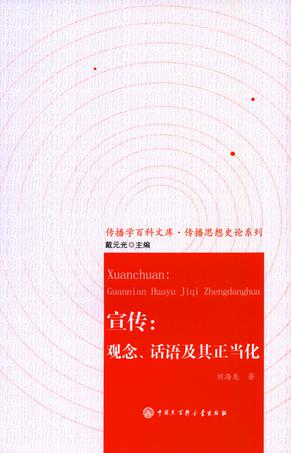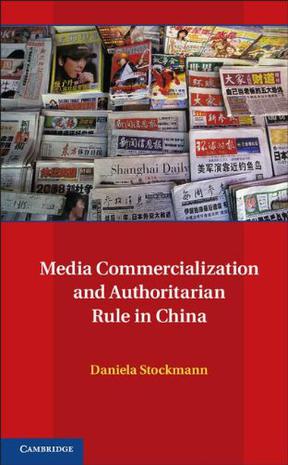欢迎来到相识电子书!
标签:媒体控制
-
宣传
本书是宣传概念的历史,也是宣传观念的历史。为了回答什么是宣传、它为什么会存在、大众为什么会容忍宣传等问题,本书追溯了第一次世界大战中宣传概念的产生、美国20世纪初宣传与民主的争论、俄国革命的宣传观念、第二次世界大战中的宣传观念、二十世纪后期的新宣传等宣传观念发展的重要环节,并以此为背景,重点研究了中国宣传观念的产生、国民党及共产党宣传观念的建立、知识分子与宣传、1949年之后中国宣传观念的变迁等问题。本书以理性中立的笔调,详细描述了二十世纪以来各种宣传观念和话语的交锋,展示了一幅国家与个人、控制与自由、思想与身体等观念相互冲突的全景图像。本书提出的问题值得每个深受宣传影响的中国人思考。 -
Media Commercialization and Authoritarian Rule in China
In most liberal democracies commercialized media is taken for granted, but in many authoritarian regimes the introduction of market forces in the media represents a radical break from the past with uncertain political and social implications. In Media Commercialization and Authoritarian Rule in China, Daniela Stockmann argues that the consequences of media marketization depend on the institutional design of the state. In one-party regimes such as China, market-based media promote regime stability rather than destabilizing authoritarianism or bringing about democracy. By analyzing the Chinese media, Stockmann ties trends of market liberalism in China to other authoritarian regimes in the Middle East, North Africa, sub-Saharan Africa and the post-Soviet region. Drawing on in-depth interviews with Chinese journalists and propaganda officials as well as more than 2000 newspaper articles, experiments and public opinion data sets, this book links censorship among journalists with patterns of media consumption and media's effects on public opinion. -
After the Propaganda State
This book argues that a combination of property rights reform, administrative fragmentation, and technological advance has caused the post-Mao Chinese state to lose a significant degree of control over “thought work,” or the management of propagandistic communications flowing into and through Chinese society. The East Asian economic meltdown of the late 1990’s has reinforced the conviction, derived from Communism’s nearly worldwide collapse a decade earlier, that the only path to sustained prosperity combines an openness to trade and investment with market economies that are minimally impinged upon by state intervention. But, the author argues, the situations in China demonstrates that the political, social, and cultural costs of “reform and opening” are high. Notably, the construction of culture in China has fallen into the hands of lower-level government administrators, semiautonomous individuals and groups in society, and foreign-based public and private organizations. Contrary to the prevailing neo-liberal wisdom, however, this transformation has not generated a Habermasian public sphere and an autonomous civil society that will lead China inevitably toward democracy. Instead, the immediate result has been “public sphere praetorianism,” a condition in which the construction of culture becomes excessively market-oriented without being directed toward the achievement of public political goals. The case of China shows that under such conditions, a society is set adrift and rudderless, with its members unable or unwilling to channel their energies toward the resolution of pressing public concerns, and communication flows dissolve into a patternless mosaic. True, the flows are much less constrained by government than ever before—an important precondition for democratization. But the short-term effect is actually an enervating depoliticization—even narcotization—of society, while the state itself paradoxically continues to lose control.
热门标签
下载排行榜
- 1 梦的解析:最佳译本
- 2 李鸿章全传
- 3 淡定的智慧
- 4 心理操控术
- 5 哈佛口才课
- 6 俗世奇人
- 7 日瓦戈医生
- 8 笑死你的逻辑学
- 9 历史老师没教过的历史
- 10 1分钟和陌生人成为朋友



